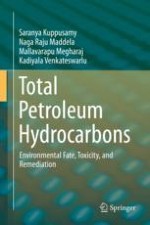2020 | OriginalPaper | Buchkapitel
9. Case Studies on Remediation of Sites Contaminated with Total Petroleum Hydrocarbons
verfasst von : Saranya Kuppusamy, Naga Raju Maddela, Mallavarapu Megharaj, Kadiyala Venkateswarlu
Erschienen in: Total Petroleum Hydrocarbons
Aktivieren Sie unsere intelligente Suche, um passende Fachinhalte oder Patente zu finden.
Wählen Sie Textabschnitte aus um mit Künstlicher Intelligenz passenden Patente zu finden. powered by
Markieren Sie Textabschnitte, um KI-gestützt weitere passende Inhalte zu finden. powered by
